How Wright and Whistler flew and drew flags
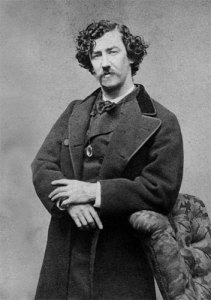
Wilbur Wright, the 20th-century co-inventor of the airplane, and James McNeill Whistler, the 19th-century painter, seem unlikely candidates to have a connection to flags. But, if you have sharp vision, you can see that they do.
WRIGHT’S DARING FLIGHT
On October 4, 1909, Wright took off from Governor’s Island in the Hudson River near Manhattan. His aim was to fly over the famous river on the occasion of the 300th anniversary of its namesake’s cruise on it and the centennial of the launching of Robert Fulton’s steamboat on the same body of water.
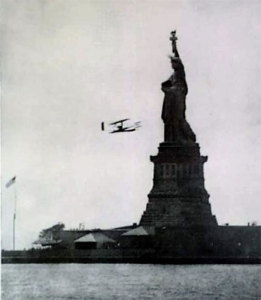
As Wright rose into the air, people with great vision noticed something new flapping on the rear of the plane. Author David McCullough recounts what they saw in his recent biography of the Wright brothers: “The one difference…was a tiny American flag fixed to the rudder. It had been sent to him by Katharine [his sister] with the request that he fly it over New York.”
For a half-hour, the pilot flew 150 feet above the Hudson at more than 30 miles per hour. After he landed, he wrote his father and said, “It was an interesting trip and at times rather exciting.”
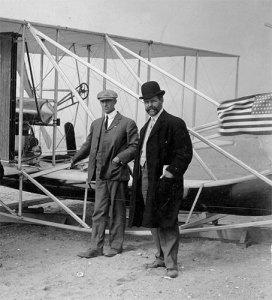
Part of that excitement was caused by buffeting winds. As McCullough wrote, “How formidable the wind problems had been could be measured by the small American flag….Brand-new at the start of the flight, it had returned in shreds.”
WHISTLER’S HIDDEN PENNANT
One of the most famous paintings in art history is “Whistler’s Mother,” a huge black-and-white portrait of the artist’s parent, Anna. Painted in 1871, it originally had a less interesting title: “Arrangement in Grey and Black, No. 1.”
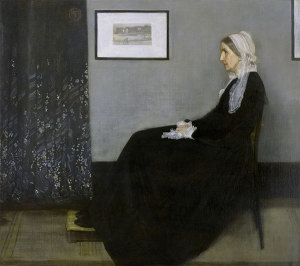 The iconic artwork includes a pennant, but it requires a little detective work to find it. Hanging on the wall behind his mother’s head, almost in the center of the canvas, is a framed sketch. The etching, done by Whistler in 1859, is titled “Black Lion Wharf” and shows a bearded sailor in the foreground on the Thames River. It was one of dozens of etchings the artist did that year.
The iconic artwork includes a pennant, but it requires a little detective work to find it. Hanging on the wall behind his mother’s head, almost in the center of the canvas, is a framed sketch. The etching, done by Whistler in 1859, is titled “Black Lion Wharf” and shows a bearded sailor in the foreground on the Thames River. It was one of dozens of etchings the artist did that year.
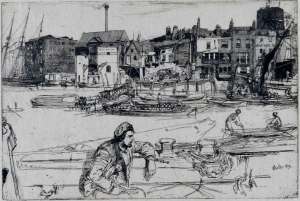
In the background of the scene are other vessels, including a tall-masted boat on the left. From its topmost mast, a pennant flies. (The zoom control on a computer can bring it into view.)
While Whistler created the drawing in 1859, it was not published for 12 years, appearing in public on its own while simultaneously decorating the portrait of his mother as if it were a secret advertisement for his book of etchings.
Whistler didn’t live to see – and, therefore, never drew – an airplane in flight with or without a flag attached. He died in July 1903, just a few months before the Wrights Brothers’ first successful flight.
